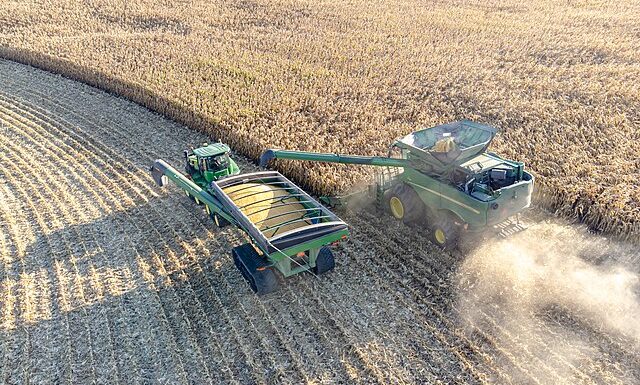A week after U.S. corn and soybean prices fell, production statistics reveal that the September harvests are also down. The U.S. National Agricultural Statistics Service (NASS) announced on October 12, 2023 that yields will come shy of earlier forecasts.
Corn will lose 1% in yield predictions but gain 10% year-on-year (y-o-y), while soybeans will shed yield by 4%.
October 1st, 2023 forecasts indicate 173 bushels of corn per acre, down from NASS’ earlier projections of 181 bushels. In other words, a 1% drop in the projected production.
There are actual gains however in overall corn production, as the 2023 crop will be 10% more than 2022’s. The 2023 output will reach 15.1 billion bushels (383.54 billion kg), above 2022’s 13.59 billion bushels (345.19 billion kg).
The soybean crop is the main loser for it has shrunk by 4% from 2022 both by acreage and production. Statistics for the 2023 harvest reveal that soy fields will only produce 4.10 billion bushels (112.6 million tonnes). This is in comparison with 4.26 billion bushels (115.95 million tonnes) from 2022.
A major reason for the poor performance of the soy crop in the 2023 season is depreciation in acreage by 4%. This year’s reduced acreage stands at 82.8 million, the same area NASS had forecast earlier on.
Other crops on the same line of lessened production include cotton, whose yield will depreciate by 11% from 2022.
NASS gathered the results via field visits to various states representing 75% of the national production of the respective crops.
The current weakened price outlook of U.S. corn and soybean, too, reflects the production slide.
U.S. soybean contracts at the Chicago boarse dipped by at least 0.7% in the first week of October, 2023 to trade at about $12.64 per bushel ($0.46 a kg). Corn slid by 0.5% from the last week of September, to trade at $4.83 per half bushel ($0.37 per 1/2 kg).
Fair weather this fall in North America alongside better yields than last year’s initiated the price pressure on corn.
